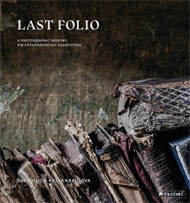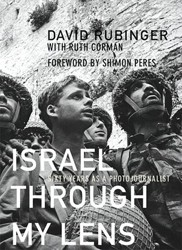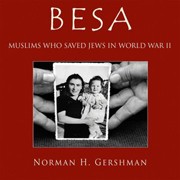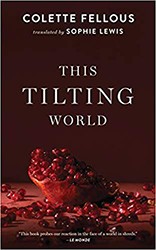This book, an album of photographs of Holocaust survivors from seventeen countries, is the third volume of a trilogy by famed photographer Aliza Auerbach. The first two, Rishonim (Pioneers) and Olim (New Immigrants; English edition entitled Aliyah) were followed by this work — published in Hebrew as Nitsolim in 2009. Auerbach sets out the parameters in her personal preface: she limits her subjects to survivors who built their lives in Israel and creates an atmosphere to the narratives by photographing train tracks in the snow — stark images taken in Jerusalem but recalling the infamous Nazi trains taking victims to the death camps.
Her subjects write their own stories — albeit very brief summaries of the horrors they endured during the war and the subsequent rebuilding of their lives in Israel. For some, the suffering began in 1938, for others in 1943, but the destruction to their families was total in every case. This volume is a tribute to the human spirit that can be rehabilitated in spite of extreme tribulation.
Auerbach chose to photograph the survivors in black and white head shots which have a powerful, almost sculptural effect. The portraits are placed opposite their personal stories. Turn the page and one sees a burst of color in a two-page photograph of their families. Included are photographs of personal objects from before or during the war and may be as simple as a an embroidered challah cover, a lemon (thrown at the train to relieve the stench of the overcrowding — and somehow preserved like an ancient fossil), or a tea set (returned after the war). Uri Orlev, noted Israeli writer of novels and children’s books, saved a lock of his ill mother’s hair cut off in a ghetto hospital shortly before she was killed and kept it in a playing card envelope.
The family photographs provide the upbeat notes to this book whose narratives could be cumulatively depressing if not for the happy faces in these photographs. Third and fourth generations — infants to middle aged children of the survivors — are photographed in informal settings, conveying the message of ultimate victory over the Nazi genocidal intent. The picture of Shulamit Catane, survivor from France, holding her 140th great grandchild attests to that. She arranges large family get-togethers twice a year and at the conclusion of her personal testimony writes that she has 205 great-grandchildren.
This volume is a worthwhile addition to Holocaust personal testimonies — it covers the experience of many different countries and does so with the sensitive images of a gifted photographer. Illustrated.
View photographs here.





